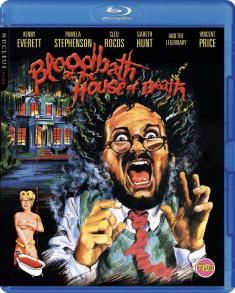Homefront
Overview -
In the year 2027, the United States of America is faced with an invasive threat. The Greater Korean Republic and its armed forces have taken control of the once productive country, after some years of hardship due to economic downturn. Major cities have fallen to the occupying forces, with no hope in sight other than small bands of civilian resistance fighters: yourself included. There’s a chance to make a difference if you’re up to the task. Fight for your country and hopefully it’ll return to its former glory. Best of all; you have the chance to be free!
Video Review
As one would expect given its America in crisis premise, Homefront is a realistic shooter, which employs an art style that tries to convey that tone. Other than some science fiction (or futuristic, if you will) elements, it looks a lot like the everyday locations its storyline visits. Closed in areas such as a box store are mixed with large, open locations, which allow for a decent amount of exploration. Though, the game’s largest mission map is limited in its travels because players are led on a stealth-based path from point A to point B.
It would be fair to say that Homefront is a good-looking game, though it’s impossible to say that it looks great. There are too many inconsistencies and a few flaws that take away from the visual presentation side of this project. Many elements look better from afar than they do in close-up range, with some even disappearing into oblivion when the player’s viewpoint comes close. The texture work and character model designs are both pretty good, though there are some issues with the former, with some edge textures occasionally reducing themselves to beads of Christmas light blue.
Adding newspapers into the equation is a smart way to help expand the story. However, their design and legible mechanics take players out of the experience they’re meant to illuminate. This is done in two ways: the first being that the glowing pieces of paper reduce the amount of realism found in its presentation. The other problem is how selecting one takes the screen from relative realism and high-definition output, to a black screen with ugly white text. Surely there could have been a better way to pull that off.
Audio Review
Sound is one of the more prominent and impressive aspects of Homefront. The strongest element in this department is the game’s eerie original score, which makes good use of haunting piano work. Its selected musical pieces really fit the game well, adding emphasis to its highs and lows. Not only is its sound quality quite good, but the score really hit a chord with me as I watched some ugly scenes unfold on American soil.
Homefront has a lot of weapons up its sleeve, including tons of vehicular deathtraps. Its sound effects represent this variety well, with a good amount of oomph and realistic flair. Explosions, bullets and motorized contraptions all combine to create a pretty impressive effects soundtrack that sounds pretty good with the volume turned up. Though, unlike the title’s score, its sound effects are not memorable or anything new. It sounds like what it is: a wartime first-person shooter. Though, that is pulled off pretty well.
The voice cast also does a pretty good job of conveying the extreme amounts of panic, emotion and rage that would realistically be inside of their characters. Due to this, Homefront’s voiceover work is a bit better than what we find in the average first-person shooter. It’s nice to hear because the game’s relatively well-written script is used properly with a pretty good cast of voices.
Kaos Studios strived to create a unique, shocking and engrossing experience with Homefront’s campaign. However, their goal was only partially met. The final product is too generic and is unfortunately affected by far too many bugs. Spending your hard earned money on this release just for single player content, isn't a good idea. It's too bad, considering how great its created premise is.
Thankfully, Homefront's multiplayer steps up and carries the quality torch, though it isn’t as inspired or as different as it could have been. Those who really enjoy online warfare should give this one a shot, although its design is not for everyone. There's an emphasis on using in-game experience point currency to better yourself, and more of a team focus than you'll find in Call of Duty. In the end, it really depends on whether you like that type of multiplayer. Very competitive gamers, who thrive with more of a team focus, should enjoy themselves.












